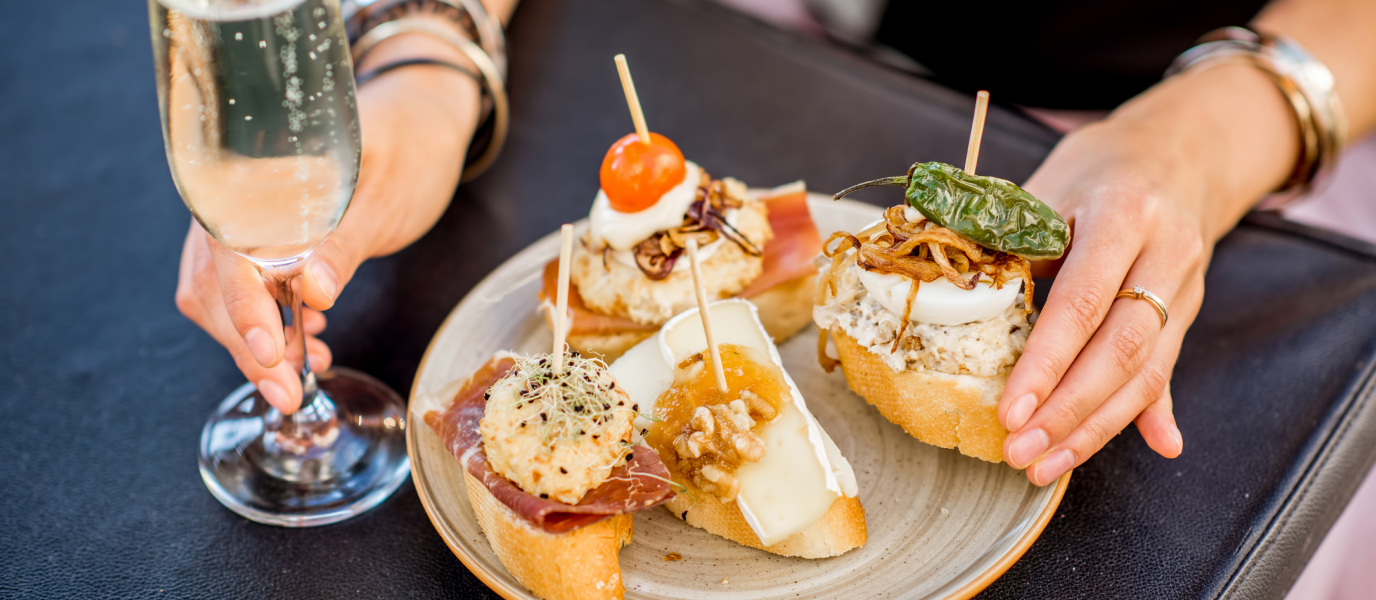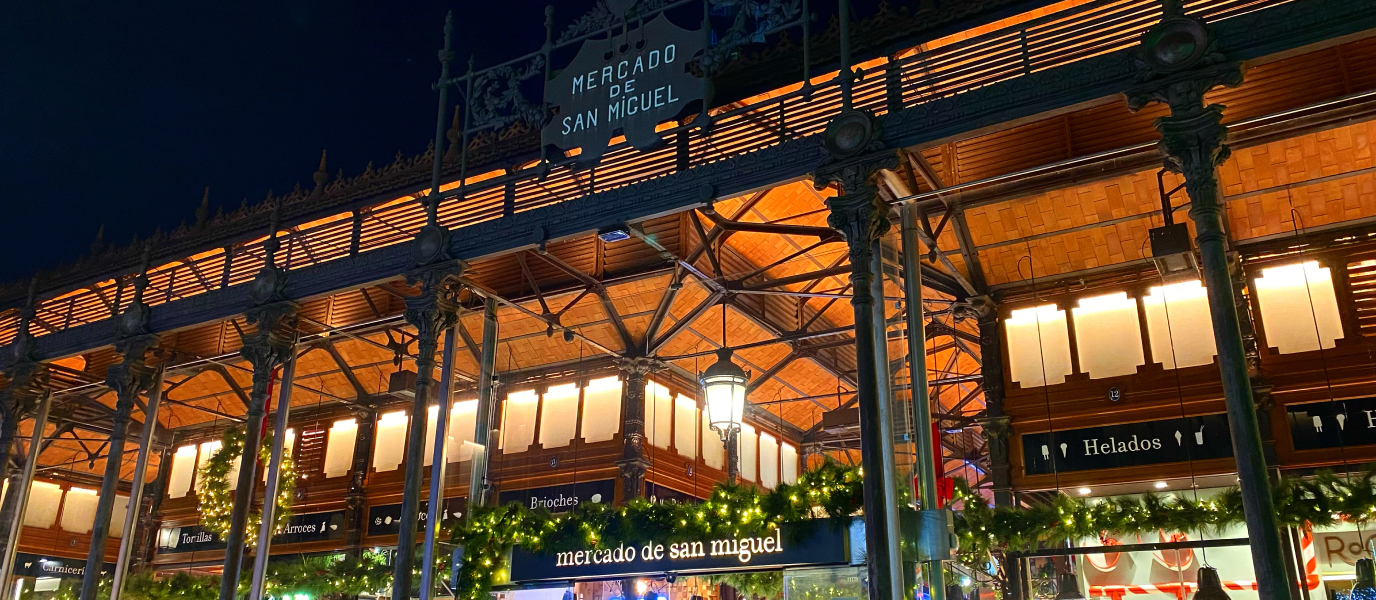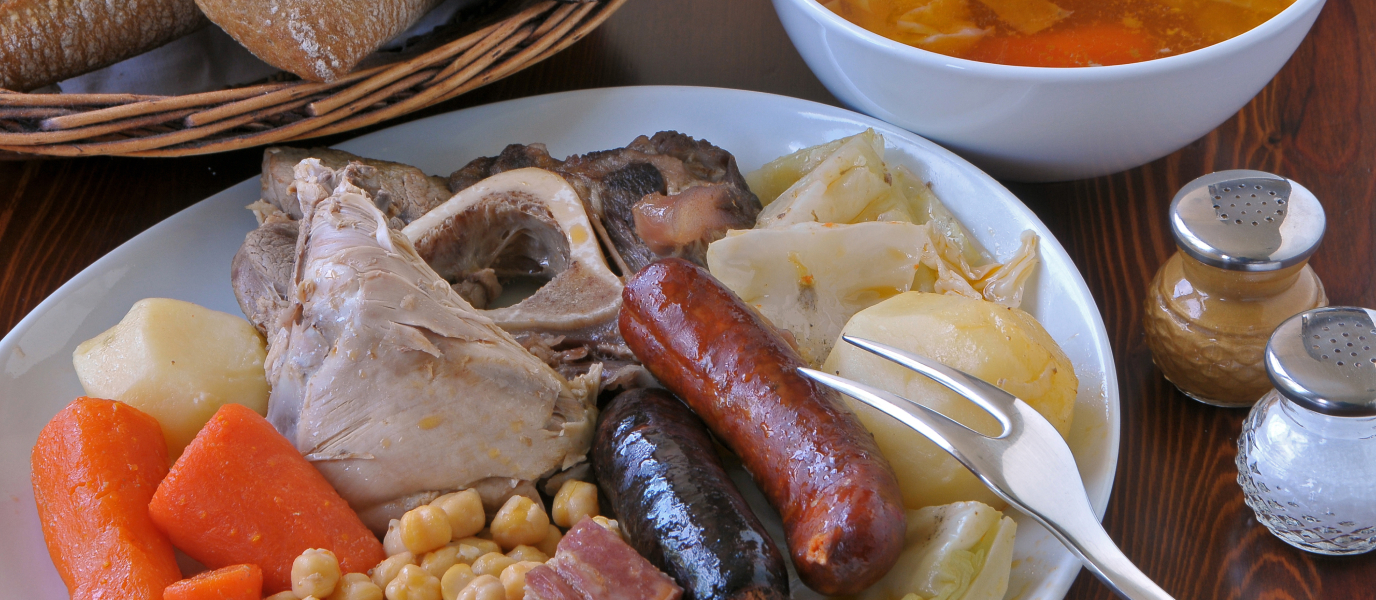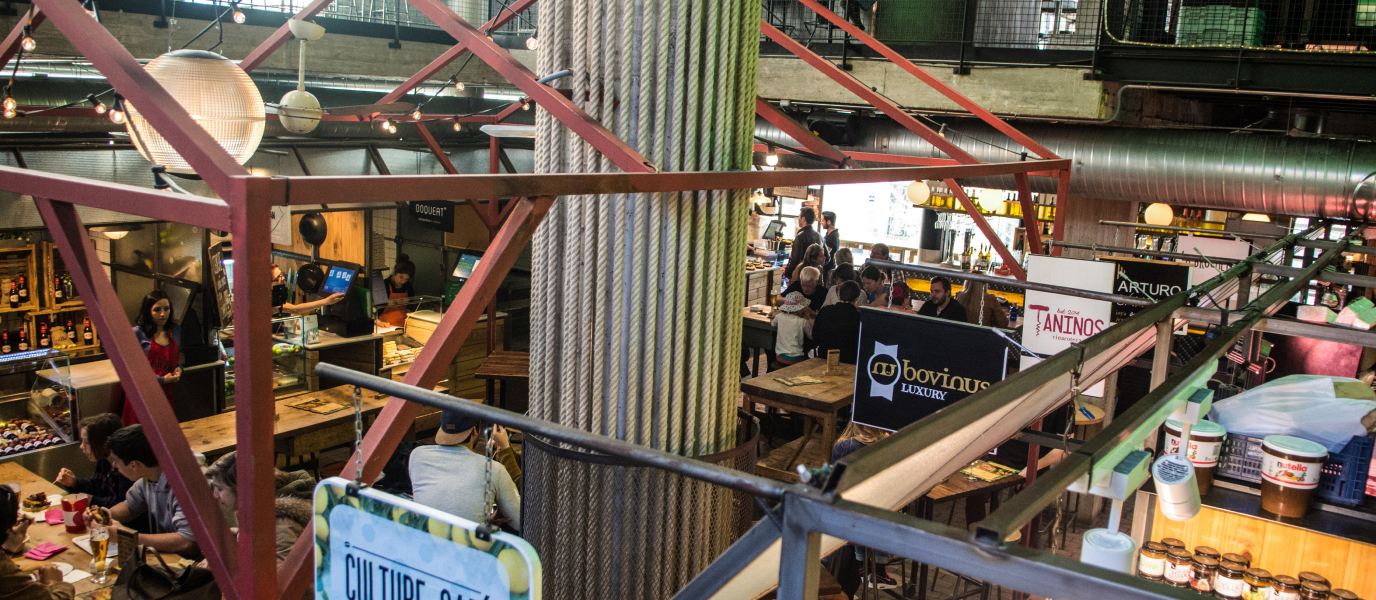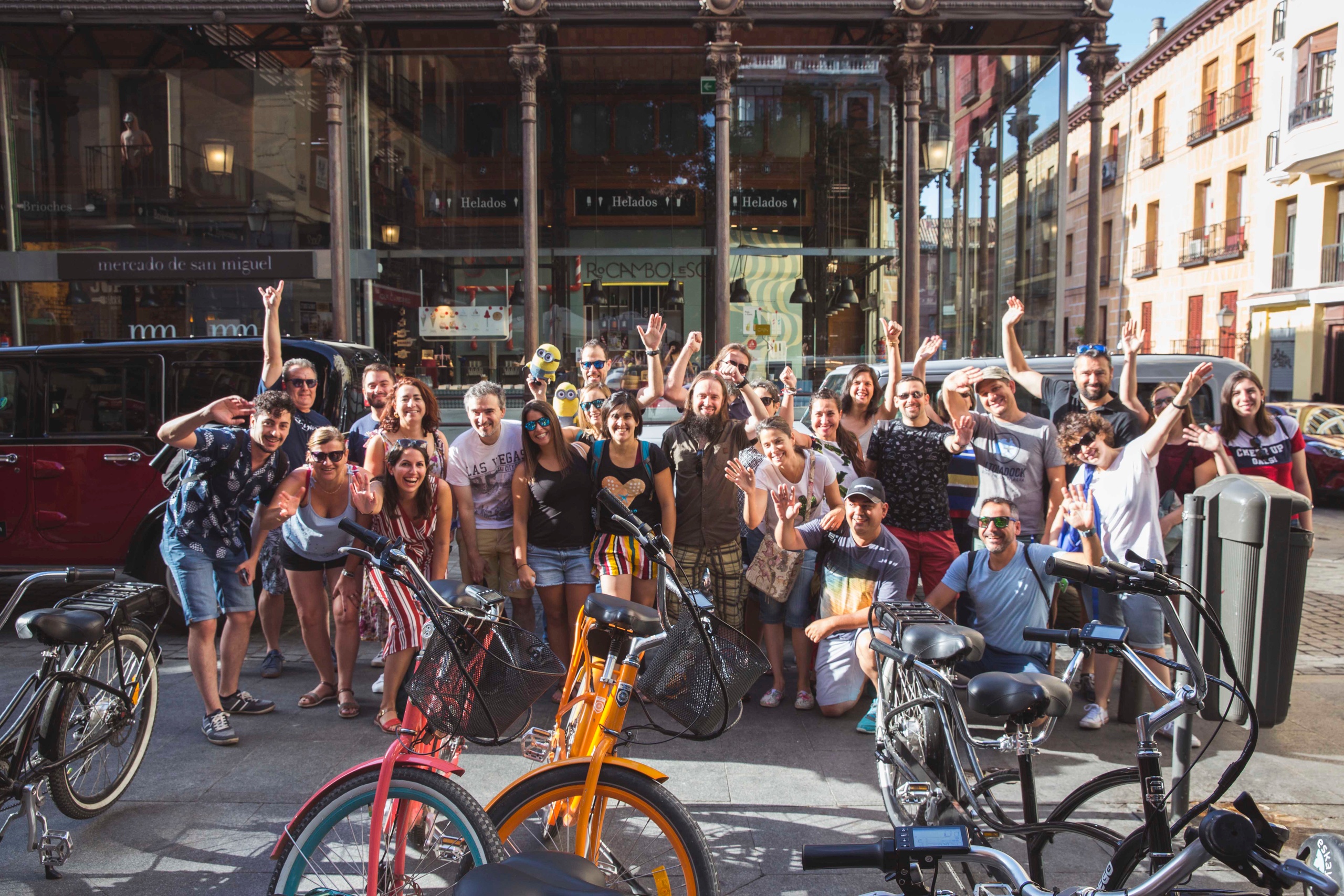Tip: before you read on, grab a pen and paper. The paragraphs below will take you on a journey into the wonderful world of the Madrilenian tapeo. The fact that Madrid is the territory of the tapa is a very poorly kept secret, and people are well aware of the incredible abundance of kitchens cooking up both national and international food, the result of the long history of immigration to the city. If we understand tapas to be “a free snack served with a drink”, then legend tells us that they first appeared in the thirteenth century, when King Alfonso X, “The Wise” decreed that in order to avoid drunken behaviour all alcohol had to be served with a small portion of food. From then on, going from bar to bar and filling up on small snacks has become a kind of ‘national sport’, and Madrid has become one of its most important playing fields. Chueca and Malasaña, La Latina, Lavapiés, Chamberí and Sol are just a few of the best areas to give it a go.
A tapas crawal in Chueca and Malasaña
The neighbourhoods of Chueca and Malasaña (officially known as the neighbourhoods of Justicia and Universidad, respectively) are very different to one another, but go hand in hand when it comes to tapas. In recent years, these areas, to the north of Gran Via, have been flying the flag for the fusion of traditional and modern, with the result being a picturesque setting and an eclectic vibe. That also applies to its cuisine, which is why these days legendary, traditional bars rub shoulders with cutting edge gastro bars, all on the same street.
Here are a few to look out for: Madrid Madriz (Calle Fuencarral, 85), in the heart of Malasaña, this place will win you over with its scrambled eggs with ham, its Iberian pork, or its platter of potatoes with sauces. The nearby Bodega la Ardosa (Calle Colón, 13), which is just as traditional, serves up vermouth from the barrel alongside seafood tapas, such as Cantabrian anchovies or battered calamari. Corredera Baja de San Pablo, Malasaña, is where you’ll be able to sample the delights of the squash croquettes of Maricastaña (no. 12), or the ‘wrinkled potatoes’ at Circo de las Tapas (no. 21). Moving to the east, you pass into Chueca, where other kinds of bars start to pop up. That’s the case with La Revoltosa (Plaza del Rey, 4), a modern tavern whose traditional tapas like Spanish omelette with salmorejo are the perfect match for a range of artisanal beers. Stop Madrid (Calle Hortaleza, 11), open since 1929, is an exceptional spot for a vermouth on tap and anchovies on toast. Or, you could try the El Cisne Azul (Calle Gravina, 19), which is a paradise for mushroom lovers, as they’re prepared in a multitude of different styles. Lastly, there’s El Tigre (Calle Infantas, 30) or La Blanca Paloma (Calle del Espíritu Santo, 21), which, drawing a young crowd and serving generous tapas, are the best options for those with tighter budgets.
Tapas in La Latina and Lavapiés
Another interesting pairing, this time to the south of Gran Via, is the neighbourhoods La Latina and Lavapiés, officially Palacio and Embajadores, respectively. More multicultural than the areas mentioned above, in these neighbourhoods you’ll find fusion cooking on every corner. In the case of Lavapiés, the very heart of tapas culture is Calle Argumosa, affectionately known by locals as the ‘seafront’, thanks to the number of parasols that stand on its pavements. A few spots, like La Playa de Lavapiés (no. 9), with an incredible selection of tapas from Asturias; Bar Automático (no. 17), with top quality salmorejo; or El Pedal (no. 33), where they make their own beer, are the perfect excuse to explore this street. And not too far away, still in Lavapiés, Donde da la Vuelta el Viento (Mesón de Paredes, 81) reveals the Extremaduran origins of its founders in its hams and its scrambled eggs with black pudding.
To the west, the main streets of La Latina, such as Cava Baja, Toledo, Calatrava or Humilladero are also great spots to stop for a tapa or two, beer in hand. A prime example of a Madrilenian tavern is Casa Lucio (Calle Cava Baja, 35), which serves up some of the best scrambled eggs in the city. Similarly, you can sample the cuisine of the north at Txirimiri (Calle Humilladero, 6), with succulent pintxos on offer, taking the form of everything from juicy croquettes to beef carpaccio fajitas. For its part, Muñiz (Calle Calatrava, 33) always serves pork ear or Spanish omelette with drinks, and Los Caracoles (Calle Toledo, 106) don’t hold back with the portions of their ‘cauldron’ of molluscs with chilli, chorizo and bay leaves.
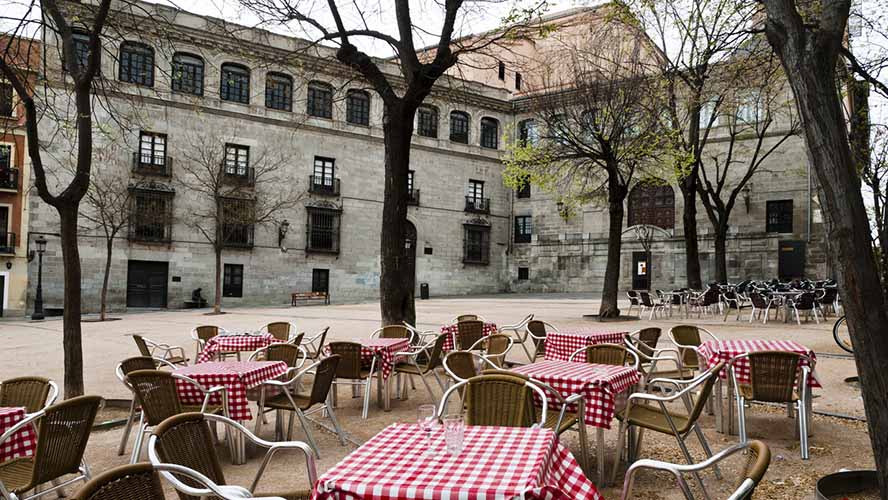
A tapas crawal in Chamberí
In the neighbourhood of Chamberí, Calle Ponzano and tapas are practically synonyms. This street has recently become a mecca for this art of miniature cuisine. Fide (no. 8) is a great start as it offers classic tapas like potato salad or anchovies along with well-pulled beer and carefully chosen wines, all in the surroundings of a quintessential bar. Along the same lines, Furtivos (no. 52) switches up its shellfish-based specialities with appetising dishes like pork shoulder and turnip green croquettes. Experimenting with new concepts, Sala de Despiece (no. 11) offers a modern tapeo experience based on different regional cuisines from throughout Spain, in surroundings inspired by a traditional butcher’s shop. To give you an idea of what’s on offer, shellfish from Galicia appear on the menu alongside red tuna from Murcia and date molasses from Fuerteventura. Last but not least here in Chamberí, why not try black pudding from Beasáin in the Vermutería Arima (no. 51) or mushroom croquettes at Casa Camu (Calle General Álvarez de Castro, 20)?
Not far from the district of Chamberi, the 5-star Barceló Emperatriz Hotel houses the chic restaurant Mutis. Patrons can enjoy typical tapas in a refined setting without all the hustle-and-bustle of a tavern. The patatas bravas, salmorejo, tuna taquitos, Iberian ham croquettes are just some of the mouth-watering options on the menu.
Tapas in Sol and Plaza Mayor
The Puerta del Sol is, as well as being the most central point of the city, another excellent area for tapas. Nearby you’ll find, for example, Askua Barra (Calle Arlabán, 7), a tavern that serves wonderful beef tartare in canapé form, perfect to be enjoyed with a beer or a glass of wine at the bar. Las Bravas (Callejón Álvarez Gato, 3), on the other hand, offer delicious potatoes to dip in a spicy tomato sauce, the recipe for which is a secret only known to them. And Casa Labra (Calle Tetuán, 12), decorated with mirrors since 1860, is still cooking up its famous pavías, tasty cod fritters that go beautifully with beer, wine or vermouth.
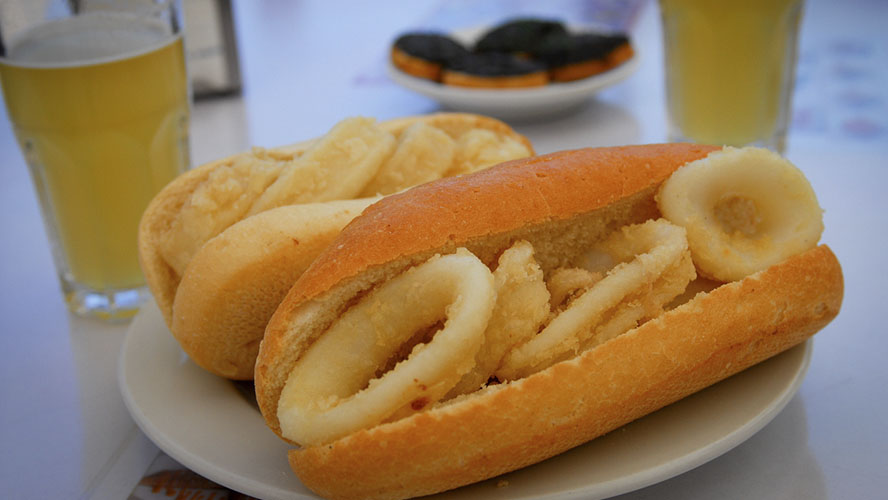
The neighbouring Plaza Mayor offers, on top of the traditional calamari roll with views over one of the busiest spots in Madrid, another whole selection of tapas bars to visit. El Sainete (Calle Segovia, 8) is one of them. With 150 bottled beers and 22 on tap, the oxtail tacos are their star turn. The traditional Taberna La Daniela (Calle Cuchilleros, 9), is another hotspot for tasting the legendary cocido de tres vuelcos, a stew made of vegetables, pulses and meats, and Daniel Sorlut opens the doors to the nearby Mercado de San Miguel. Specialising in oysters from Normandy, their flavour is enhanced by a glass of white wine. Cerveriz, also found within the market, is one of the few bars that still serves a free tapa with every drink.
Once you’ve finished enjoying the wonderful tapas the city has to offer, head to Garra. Located on the ground floor of the Barceló Torre de Madrid Hotel, in Plaza de España, this beautifully designed bar serves the best cocktails in this part of town. They also offer live music concerts.





























































